Table of contents
Know the cycle of Surya Namaskar movements: the sun salutation!
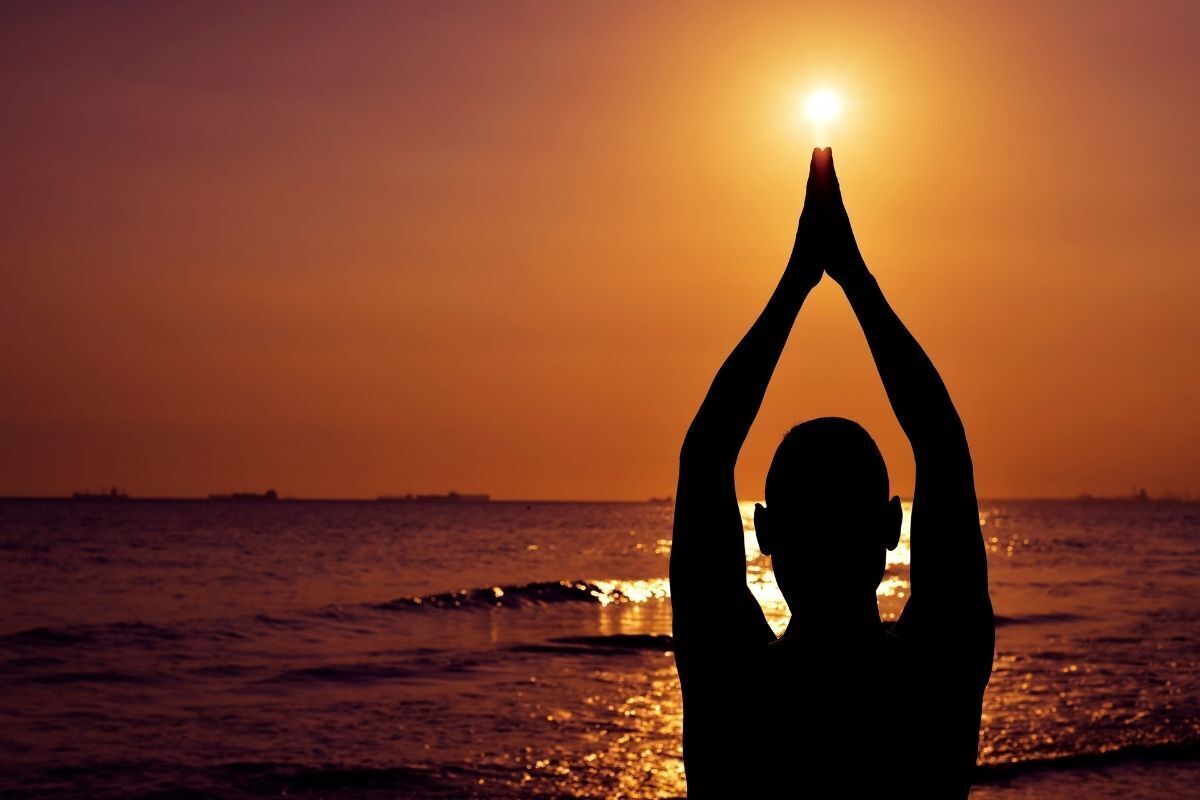
Within the yoga philosophy, each posture and sequence has connection with the whole. The Surya Namaskar corresponds to a set of movements, the asanas, which have the purpose of saluting the figure of God represented by the Sun, which takes the name of Surya. For this reason, it is a sequence that refers to feelings such as reverence and integration with the divine.
Throughout the performance of the asanas, the body and mind will be more prepared for the practice or even for the day itself. The psychosomatic properties of yoga practice unfold in physical and emotional benefits from the support of the postures, which is also reflected in the Surya Namaskar.
So, the repetition of Surya in its variations helps to bring more strength, flexibility and perception of the present moment. Check, along the article, more information about the sun salutation that originated in India!
Understanding more about yoga and Surya Namaskar
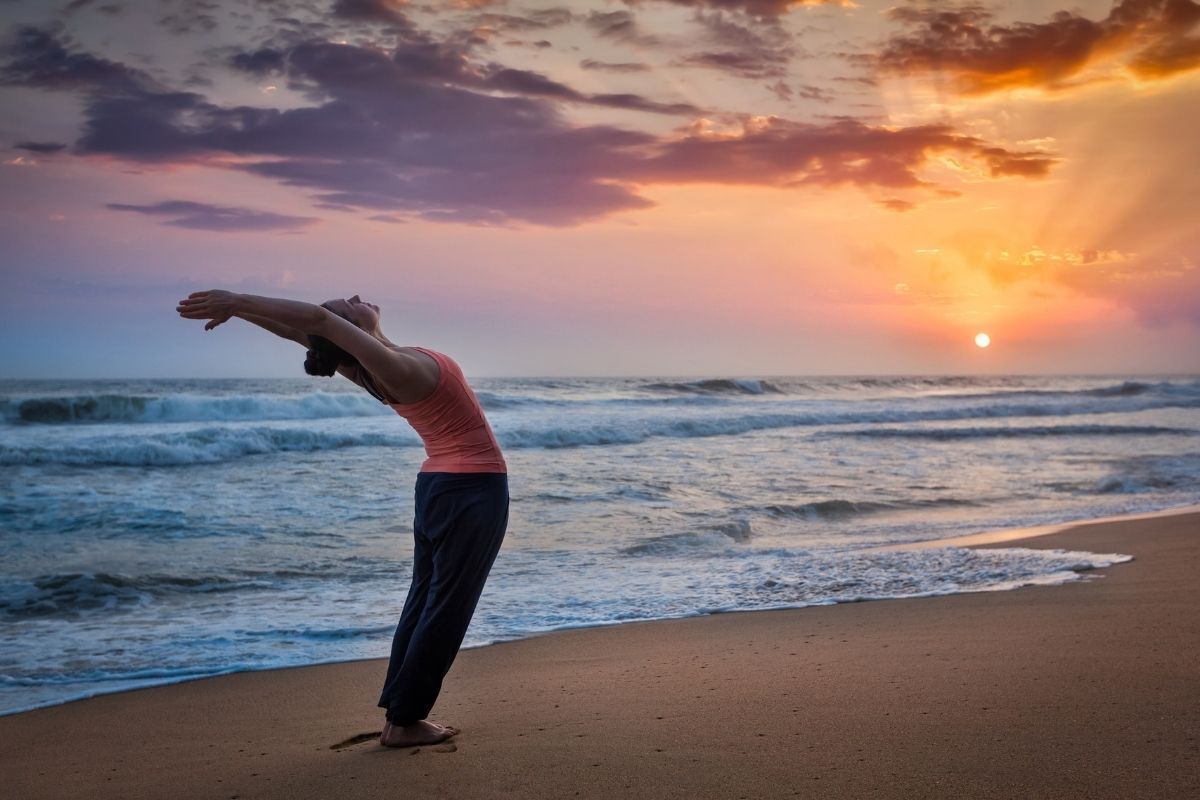
Millennial, yoga and Surya Namaskar connect not only when the sun salutation presents itself in yoga practices and classes. Entering and leaving each asana following the rhythm of the breath itself stimulates the body and quiets the mind, making the prana, the vital energy, flow.
Below, learn more about the history of Surya Namaskar and its relationship to a deep state of presence exalted in yoga!
What is Surya Namaslar?
The Surya Namaskar is a sequence of postures that refers to the beginning of the Indian civilization. Of cultural character, it can be understood as a connection between individuals and divinity, besides promoting transformations in the physical body. The repetition of the asanas symbolizes the rising and setting of the sun, in a cycle similar to a dance that returns to the starting point.
It is a reverence to the sun, in a kind of meditation in movement. More than just movements, they are conscious actions that develop new physical and emotional perspectives.
Origin and history of yoga
Yoga originated in India and, although it is not possible to prove with certainty the moment of its emergence, it is believed to have occurred around 5,000 years ago. The millennial practice, whose name comes from Sanskrit and alludes to union, has the movements on the mat as its most popular expression. However, experiencing yoga corresponds to a set of pillars.
Its philosophy includes connecting with principles such as non-violence and discipline, which are applied in various contexts of a being's life beyond the practice itself. There are different types of yoga, each with a purpose in relation to the physical body and emotional experience.
What is the sun salutation for?
The sun salutation represents the reverence before the divinity symbolized by the sun. It's part of the concept developed in yoga classes and has direct relation with the fact that, to be big, it's necessary to be small. The reverence to Surya, therefore, is like a ritual to a figure that is honored for millenniums in India.
Therefore, Surya is the divine representation of who knows everything and sees everything, and is a guardian of everything that overflows life. The practice of Surya Namaskar integrates pranayamas and asanas, two of the pillars of yoga: conscious breathing and postures. Thus, honoring the sun through the sequence is a way to connect spiritually to the highest part of the whole.
How does Surya Namaskar work?
The performance of Surya Namaskar has as principle the acceptance of the being. One should not force or accelerate the postures, in order to obtain the physical and mental benefits brought by the sequence. Although it seems contradictory, respecting limitations is the best way to expand the relationship between the physical body and the subtle energy.
When practicing Surya Namaskar in a natural and fluid way, without forcing, the real effects of the practice arise. With a calmer mind, the yogi can concentrate on the present moment, one of the yoga precepts. With repetition, the movements become more fluid and the interiorization of the being is a consequence. The use of mantras is also common in the performance of Surya.
Surya Namaskar step by step
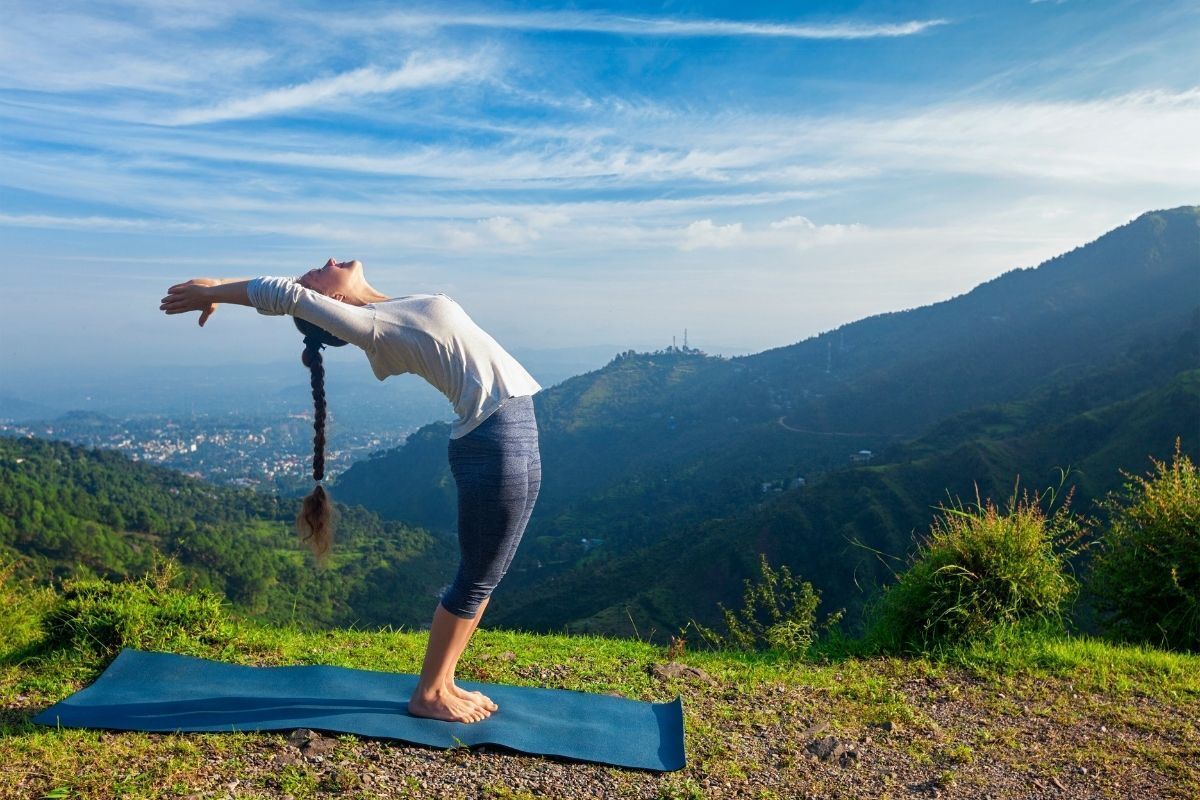
The Surya Namaskar sequence is considered extremely complete from every possible perspective. Besides conditioning the whole body, the sun salutation works the respiratory system, purifies and is an invitation to introspection. Although the asanas may vary, check out what is, essentially, the step by step of Surya Namaskar and the proposal of each posture!
1º - Tadasana, mountain posture
The starting point of Surya Namaskar is the mountain posture. In Tadasana, the apparent inaction is a reflection of multiple actions that keep the body balanced and aligned in connection with the energy of the Earth.
In this asana, spread your feet hip-width apart and drop your arms at your sides, palms facing forward. If you wish, close your eyes. It is possible to remain in a few breaths in Tadasana, creating energetic and physical roots before starting the sequence.
In Surya Namaskar, the use of whispering breathing, or ujjayi pranayama, is very common. To perform it, inhale and exhale only through the nose, contracting the glottis and creating an audible sound. This breathing is calming and increases the activity of the parasympathetic system.
2º - Uttanasana, forward bending posture
In Tadasana, inhale and raise your arms, palms facing upwards. On the exhale, direct your hands towards the floor, entering Uttanasana. The posture is a forward bend, which can be performed with the knees extended or bent, depending on the flexibility of the practitioner. The hips should point upwards, being in the direction of the ankles.
To bend the torso, perform the movement from the pelvis. The asana deeply stretches the muscles of the posterior thighs and also the back. When inhaling, start the transition to the next posture.
3rd - Ashwa Sanchalanasana, runner's position
Ashwa Sanchalanasana is a posture that develops confidence and determination. To enter, take a large step backwards with one leg from the Uttanasana. The front foot is between the hands, and the knee is flexed without going beyond the ankle.
The back leg remains extended, with the heel active and elevated. It is an asana that involves opposing forces to bring stability and works the hip flexors intensely.
4th - Adho Mukha Svanasana
On the exhalation, enter the dog looking down. To do this, step backwards with your front leg, lining up both feet. The palms of your hands stay on the floor, fingers apart.
The main demand of Adho Mukha Svanasana is to align the spine, even if the knees need to be bent and the heels do not reach the floor. The abdomen should go towards the thighs. After the stretching provided by the posture, when inhaling, continue the sequence.
5º - Ashtanga Namaskara, greeting posture with 8 limbs
The well-known plank posture (Phalakasana) is a transition to lowering the body towards the mat, which happens on the exhale, since the breath coordinates the movements. After the plank, on the exhale, rest your knees on the mat and lower the upper part of your torso, keeping your hips elevated and your toes also on the mat.
As the lungs are emptied, finish the movement, which resembles a dive. Asana reduces anxiety and tension.
6º - Bhujangasana, posture of the snake
As you inhale, raise your torso, keeping your hands on the mat. Keep your elbows close to your body and flexed, contracting glutes and resting your insteps flat on the mat. The strength of snake posture is in your upper back, not your lower back.
Move your shoulders away from your ears and bring your shoulder blades closer together, keeping your chest elevated. Bhujangasana is a backward bending posture that opens the chest and releases stored emotions.
It also improves breathing capacity and posture. If you prefer, replace this asana with Urdhva Mukha Svanasana, the dog looking upwards. In that case, press your feet on the mat and keep your legs and hips off the floor. The arms stay completely stretched.
Ending the motion cycle
Since the Surya Namaskar movements represent the daily solar cycle, the sequence is cyclic. In this way, it returns to the same postures from where it started, creating a concept of beginning, middle and end.
As with the previous asanas, the sun salutation is based on the breathing rhythm for the transition between postures. If you have started the cycle using ujjayi pranayama, continue with this breathing if you wish. At any time, it is possible to return to diaphragmatic breathing.
Adho Mukha Svanasana
The return to Adho Mukha Svanasana is the preparatory step for the yogi to enter the final stretch of the sequence. The dog looking down is considered a resting posture, although its physical demand is undeniable. After holding the asana throughout the exhalation, the inhale should lead to the next posture.
Ashwa Sanchalanasana
Back in the runner's posture, it is time to bring the opposite leg forward to the one that was in this position the first time. In yoga, postures that work the sides of the body separately should always be repeated for physical and energetic purposes. It is important to raise your gaze and keep your foot between your hands.
Uttanasana
As you exhale, return to forward flexion. Again, knees can be bent if necessary, and palms should be on the floor. Focusing on the present moment helps to further reap the benefits of the posture, which, with delivery, keeps the hips pointing upward at all times.
Tadasana
On the final inhalation, raise your arms and bring your palms together above your head. Subtly bending your body backwards at the lumbar spine is a very common action at this stage. On the exhale, lower your hands to chest level and release them at your side, returning to the initial asana, the Tadasana. The posture helps to connect the energy of the being to the ground.
Shavasana, posture of the corpse
Shavasana, or Savana, is the final posture of the yoga practices, and it may end the Surya Namaskar cycle. It is an asana of rest, in which the yogi lies in dorsal decubitus, with the legs slightly apart and the arms beside the body, with the palms of the hands upwards. It is called corpse posture because it also simulates the relaxation of the body which occurs from the extremities to the center.
Thus, when performing Shavasana, keep your eyes closed and breathe calmly. It is possible to combine the posture with meditations, and the focus of this closing is the channeling of the energy that was moved throughout the practice.
How to do the complete cycle of the sun salutation
The complete cycle of sun salutation comprises the repetition of the asanas and their transitions in the known sequences, which can vary, but have the same goal. In the case of Surya Namaskar, which has the runner's posture, for example, to complete the cycle depends on two entire passages through the sequence to work equally the two sides of the body.
The guide to fulfill the cycle is the respiratory flow, and there are practices in which, before entering each asana, a mantra is chanted. By sustaining the postures, different energy centers of the body, the chakras are worked and potentiated.
Benefits of Surya Namaskar
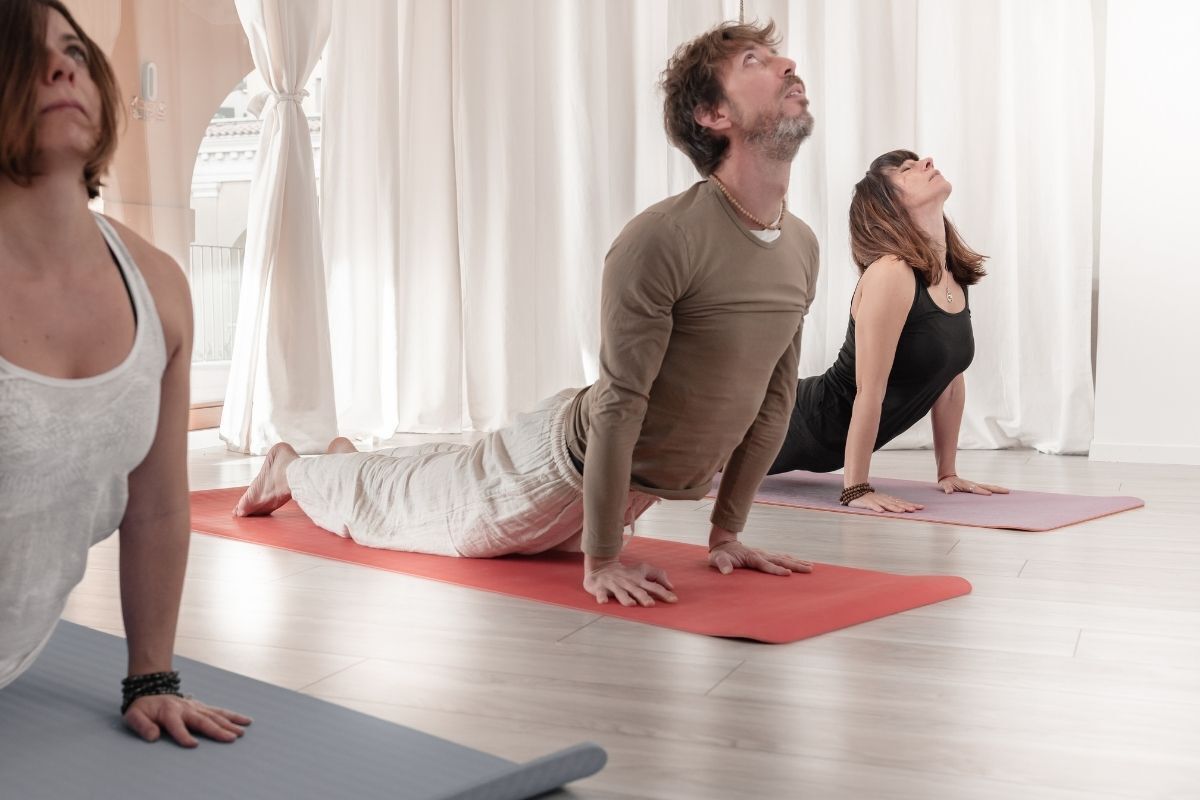
It is no secret that Surya Namaskar is a demanding sequence full of benefits. Precisely because it demands physical dedication and emotional surrender, the impacts on health can be clearly seen. Besides making the body strong and more resistant, the asanas are also related to the mental and energetic well-being of the being.
Relieves anxiety and stress
The Surya Namaskar movement cycle is very functional for relieving symptoms of anxiety and stress. This is because the postures involved help calm the body and mind by lowering the heart rate and slowing the breathing.
Postures in which the head stays low, such as Uttanasana, still elevate the blood circulation of the nervous system, which promotes calm. The very breathing of the sun salutation, being the starting point for the asanas, provides more tranquility and mental clarity, reducing emotional imbalances.
Activates blood circulation
Performing the Surya Namaskar postures and holding them for a few seconds increases cardiovascular effort, as well as the transitions. Like any yoga practice, vigorous sequences activate the body and produce heat, since they promote more blood circulation in different parts of the body. Therefore, more oxygen is transported to the body's cells.
Strengthens muscles and improves flexibility
The postures repeated in Surya Namaskar require strength from the body. By working several muscle groups and demanding the activation of different parts of the body, they help to strengthen and stretch muscles of the thighs, calves, back, shoulders, arms, among others.
The abdominal contraction during the movements, pulling the navel inwards, is always indicated in yoga practices. This measure also helps protect the lumbar spine region and prevents injuries.
Relieves back pain and posture problems
Being a daily workout that demands the body, Surya Namaskar benefits the back muscles immensely. Its movements, including forward and backward push-ups as well as transitions, still make the spine more flexible.
A large part of the discomfort felt by people in relation to their back comes, precisely, from the lack of mobility and flexibility. Sun salutation, by exploring a wide variety of movements in different parts of the body, also helps to align the posture and correct problems related to it.
Improves coordination of movements
The yoga practice is an ally for those who seek to develop body awareness and coordination. As for Surya Namaskar, the demand proposed by the cycle stimulates even more the quality and fluidity of the movements, besides the refined notions of perception and space. By repeating the sequence regularly, the movements become more coordinated, lighter and harmonious, also in everyday life.
Helps mental concentration
Yoga practice as a whole brings more concentration and, with Surya Namaskar, it is no different. By putting the focus on the breath and the body to perform the movements, the mind becomes quieter and more concentrated in the present moment.
The calmer the individual is mentally, the greater his or her capacity for perception and attention to what is happening. This benefit even helps develop body awareness and emphasizes the limits of the practitioner's body.
Strengthens the immune system
Stress, anxiety and peaks of certain hormones end up decreasing immunity. To reverse this situation, inserting physical activities in the routine is a fundamental step. Surya Namaskar, among the yoga practices, is considered very complete for positively impacting the body and mental health.
Thus, with the reduction of stress levels and the release of tension, the body becomes healthier and the immune system is strengthened.
Helps to detoxify the body
The breath is an extremely powerful tool to detoxify the body. During the performance of Surya Namaskar, by focusing on the inlet and outlet of air, it becomes easier to fully fill the lungs and empty them in a soothing rhythm.
This step helps in keeping the blood properly oxygenated, improving the well-being of the organs and systems. Surya Namsakar also detoxifies the thoughts as it calms the mind. The release of excess carbon dioxide in the body is another notable benefit.
Further information about yoga and Surya Namaskar
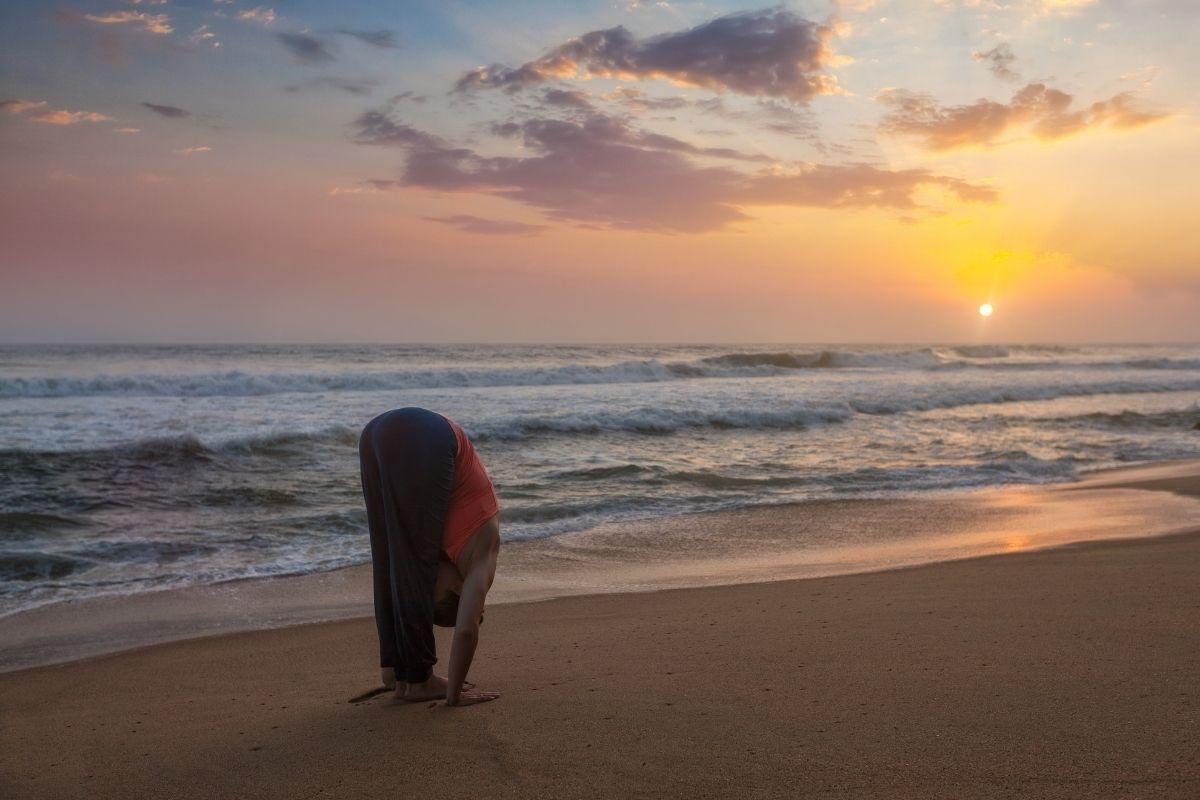
The regular practice of Surya Namaskar, in small repetitions or in the challenging cycle of 108 sequences, energizes the organism as a whole. With different variations, personalized duration and possible adaptations, it is a way to bring energy to the solar plexus, important chakra that acts as the energetic center of the body. Do you want to know more about the sun salutation? Check other data!
When to practice sun salutation?
For those who take yoga classes in person or remotely, the sun salutation can be included in the classes by the instructors. In other cases, the Surya Namaskar can be the first step of the daily practice. Ideally, the sequence is performed every morning, following the sunrise, preferably on an empty stomach.
Saluting the sun facing the direction where the star rises also plays an important role. From the point of view of the chakras, this action helps to expand each of the energy centers of the body. Throughout the cycle, different chakras are activated.
What is the ideal time to practice sun salutation?
Surya Namaskar, as it is practiced in the rhythm of the yogi breathing, doesn't have a pre-established time. Depending on the breathing capacity of each one, the sun salutation can be more or less extensive. In general, each inhalation and exhalation lasts around 3 to 5 seconds.
There is no ideal time, but the sun salutation is brief, varying from 1 minute to approximately 3 or more. In addition, the time can also increase if the practitioner chooses to remain longer in one or more postures. This is because the practice always belongs to the yogi.
How many calories does the Surya Namaskar movement cycle burn?
The complete sequence of Surya Namaskar burns, on average, between 10 and 14 calories. Although it may seem little, the sun salutation can be repeated many times. Doing it 108 times is a challenge recommended only for those who are already advanced in the practice, since it demands a lot from the body. However, it is perfectly possible to do the sequence just a few times, with the same benefits.
Who can practice Surya Namaskar?
Surya Namaskar is indicated for all yoga practitioners, except in cases of health problems. Individuals with heart diseases, hypertension, back, shoulder or wrist limitations and pregnant women should avoid the sun salutation. In other situations, it is enough to adapt the intensity of the postures to the body, since the sequence demands strength.
Cautions when doing Surya Namaskar
The main necessary care to who practices Surya Namaskar is to do it respecting the limitations of the body. To demand too much of the musculature can lead to injuries, besides discomfort. In such situations, the mind gets agitated and the benefits of the sequence are not truly felt by the yogi.
In the case of health problems or issues related to the back and blood pressure, for example, it is recommended to seek a specialist before adopting the practice. In addition, a care of energetic nature concerns not forcing the body, following one of the precepts of yoga: that of non-violence. Excessive effort and pain are, after all, a form of violence against the body.
The movements and postures of Surya Namaskar make reference to the sunrise and sunset!

The sequence of Surya Namaskar, by including different asanas, represents, in a symbolic way, the daily cycle of the sun. The star rises in the horizon, reaches its highest point and starts its descent towards the moment when it sets, returning to the starting point. The same dynamics happens during the Surya Namaskar, which connects all the layers of the being and is considered very complete.
In addition to working on strength and flexibility, the sun salutation postures are performed at the same pace as the practitioner's breathing. When the yogi inhales, he or she enters one position, and when he or she exhales, he or she enters another.
This means that the speed of completion of Surya Namaskar is very personal, being slower for those who have practiced longer and are able to prolong the breathing flow. When the sequence is performed at times close to sunrise and sunset, the spiritual benefits are even more evident.

